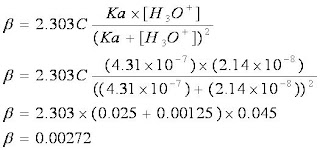
The Ultimate Guide on How to Lower pH in Koi Pond Water
Introduction
A koi pond is a beautiful addition to any garden, but maintaining the right water chemistry is crucial for the health and wellbeing of your fish and aquatic plants. One of the most important factors to consider is the pH level of your pond water. The pH scale measures acidity or alkalinity on a scale of 0 to 14, with 7 being neutral. The ideal pH range for koi fish is between 7.0 and 8.5, and anything outside of this range can cause health problems and even death.
Why is pH important in a koi pond?
Maintaining a stable pH level in your koi pond is crucial for the health of your fish and aquatic plants. A pH level that is too high or too low can cause a range of problems, including:
- Stress and illness in fish
- Poor growth in koi
- Algae bloom
- Damage to aquatic plants
- Reduced efficiency of biological filtration
How to test the pH level in your koi pond
Before you can lower the pH level in your koi pond, you need to know what the current pH level is. You can test the pH level of your pond water using a pH test kit, which is easily available at any pet store or garden center. Follow the instructions on the test kit to get an accurate reading of your pond water’s pH level.

Causes of high pH in koi pond water
There are several reasons why the pH level in your koi pond water may be too high. Some of the common causes include:
- Hard water
- Presence of limestone or coral in the pond
- Overuse of chemical treatments
- High alkalinity levels
How to lower pH in koi pond water
If the pH level in your koi pond is too high, there are several ways to lower it. The method that you use will depend on the cause of the high pH level, as well as the severity of the problem. Here are some of the most effective methods:
1. Add an acid buffer
An acid buffer is a substance that you can add to your pond water to lower its pH level. Acid buffers work by neutralizing the alkalinity in the pond water, thereby lowering the pH level. Some of the most commonly used acid buffers include sulfuric acid, nitric acid, and muriatic acid.

2. Use peat moss
Peat moss is a natural way to lower the pH level of your koi pond water. Peat moss is acidic, and it releases tannins into the water, which helps to lower the pH level. To use peat moss, simply place it in a mesh bag and submerge it in your pond. Replace the peat moss once a month to maintain the desired pH level.

3. Install a reverse osmosis filter
A reverse osmosis filter is a high-tech way to lower the pH level of your koi pond water. Reverse osmosis is a process by which water is forced through a semipermeable membrane, which removes impurities and lowers the pH level. Reverse osmosis filters can be expensive, but they are effective in removing all impurities from water, not just alkalinity.

Preventing high pH in koi pond water
Preventing high pH levels in your koi pond water is much easier than correcting the problem once it occurs. Some of the steps that you can take to prevent high pH levels include:
- Regularly testing the pH level of your pond water
- Maintaining a balanced ecosystem by adding beneficial bacteria
- Avoiding overuse of chemical treatments
- Using a water softener if your water is hard
- Avoiding the use of limestone or coral in your pond
Conclusion
Maintaining the right pH level in your koi pond water is crucial for the health and wellbeing of your fish and plants. By regularly testing the pH level of your pond water and taking steps to prevent high pH levels, you can ensure that your pond remains healthy and beautiful for years to come.